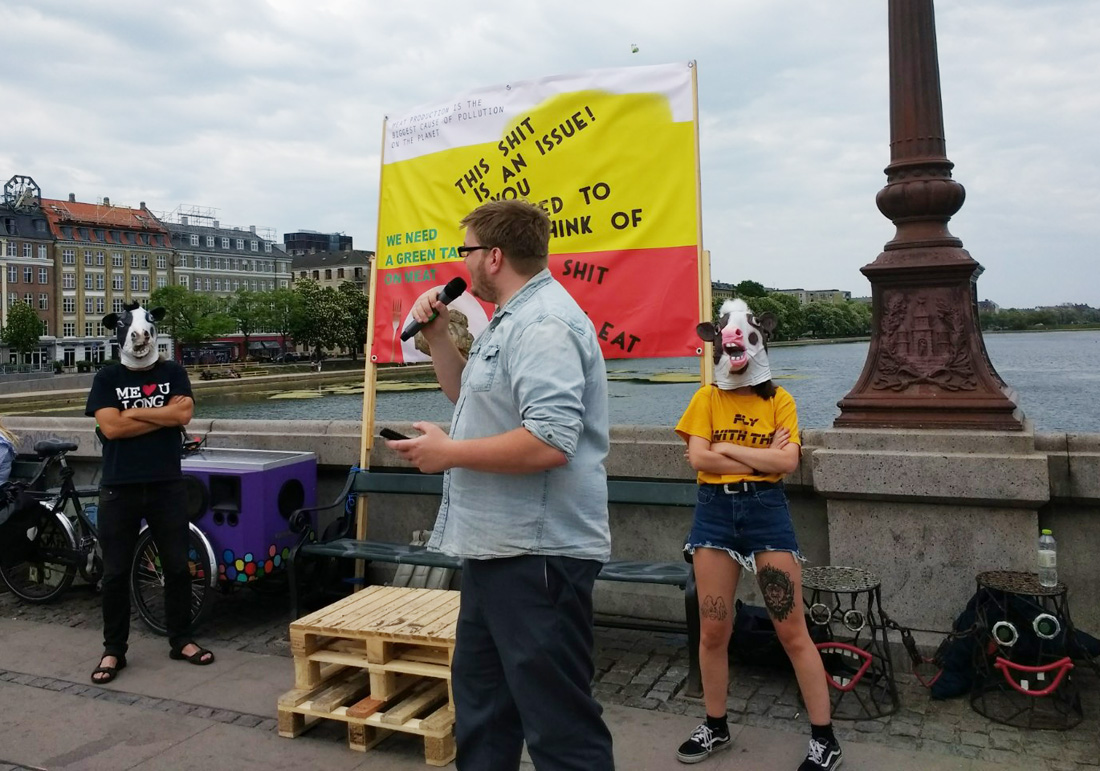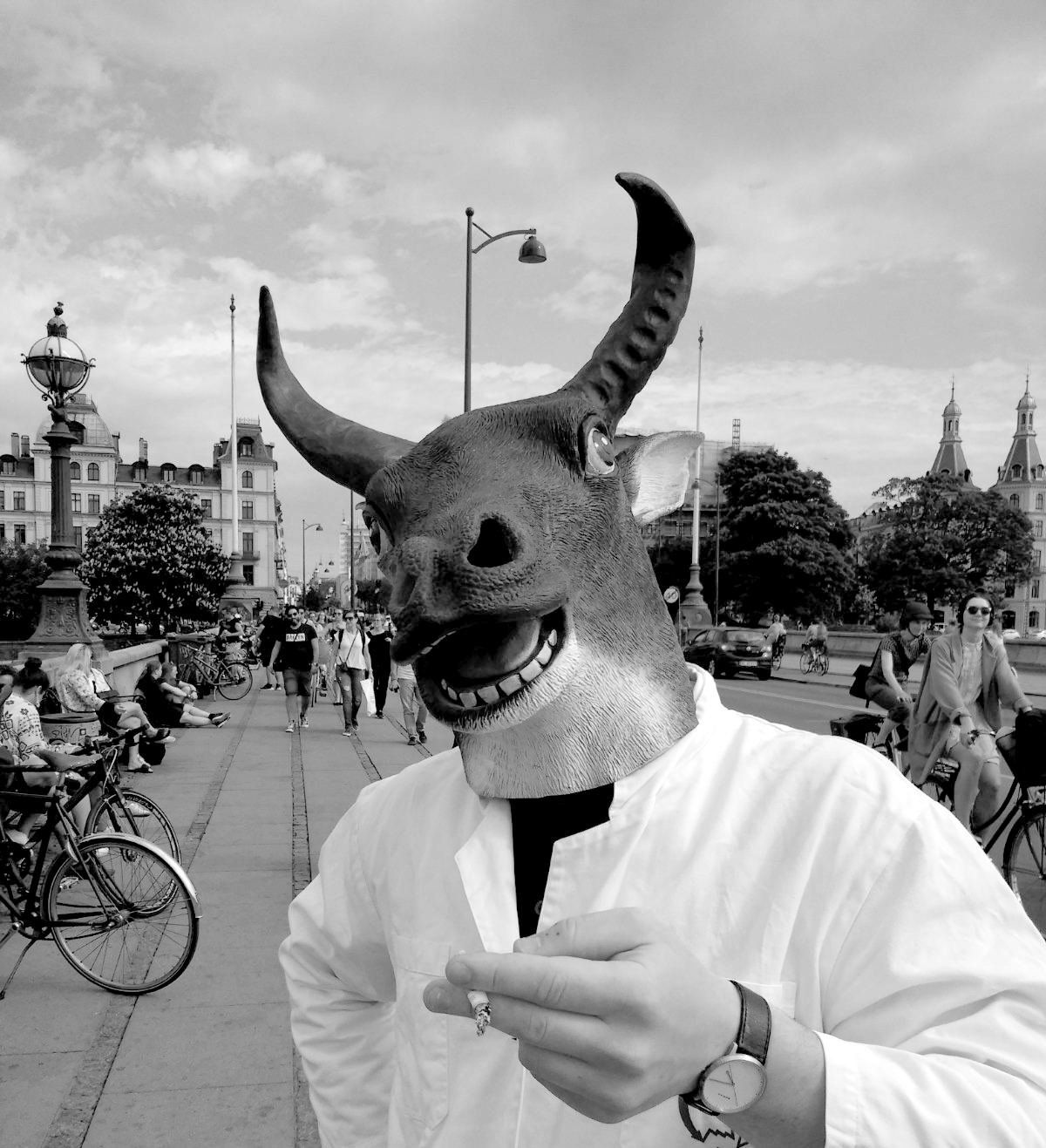Stephen Duncombe and Silas Harrebye’s evidence-based, empirical, academic research demonstrates the effectiveness of creative activism
The Copenhagen Experiment: testing the effectiveness of creative vs. conventional forms of activism

On a busy bridge in Copenhagen, Denmark, C4AA Co-Founder and Research Director Stephen Duncombe, along with Silas Harrebye, designed and staged a public experiment. They tested the comparative effect and affect of creative vs. more conventional forms of activism over a three day period.
[The study] found that a creative approach was more effective at delivering on awareness, engagement, and receptiveness
By analyzing differences and similarities on several levels including:
- attention
- thought
- feeling
- memory
- action
they found that a creative approach was more effective at delivering on awareness, engagement, and receptiveness than conventional means.
Another exciting result: people they interviewed and observed were more positive towards the creative interventions than more conventional ones. Follow-up surveys revealed that creative activism proved to be more memorable and result in more ensuing action on the issues.
The study is now published in the Social Movement Studies journal (paywalled).
The Center for Artistic Activism was founded on research and read more about our research and publications on our site.






You must be logged in to post a comment.